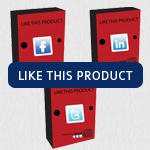Virtual RFID – Real Time RFID Tracking System!
One of the essential technologies is RFID technology, which adopted in a wide area of applications such as manufacture, logistic, and pharmacy. It is necessary to test whether the RFID middleware can process a huge stream of streaming data correctly in real-time or not. Read cycle in RFID represents the communication period between the reader and the RFID middleware, which is not pre-defined.
Purpose
The primary purpose is to describe a virtualization model of RFID. The model is implemented as a software service that mostly depends upon the other sources of internet services.
Design
Some supply chain members don’t have a compatible network infrastructure at home. There is also an accessibility problem for consignments going offside. The paper introduces a service abstraction layer in the RFID to remove the dependency on a specific RFID framework. From this, the paper introduces a new virtual infrastructure that interfaces with emerging identification technologies.
Search limitations
The new system is tested in a real industry environment with defined coverage and scope. The suggestion because of the full rollout of the technologies in global supply chains still requires further investigation.
Value
The concept of virtualization in operating systems, but its application to the supply chain has discovered before. Introducing the SAL allows the ability of systems handling goods, tracking events through the supply chain.
RFID technology types
Radiofrequency types of RFID technology have become much more common across several industries, but there is a variety of different RFID technology and tags, each uniquely suited two different applications.
The radiofrequency range they use to communicate, and especially the way the tag communicates with the readers can classify RFID tags.
What’s the frequency?
RFID tags can be grouped into three different categories based on the range of frequencies they used to communicate are:
- Low frequency (LF)
- High frequency (HF)
- Ultra-high frequency (UHF)
Passive or active?
There are two types of tags:
- Passive RFID
In a passive RFID solution, the reader signals the tag, and that signal is used to power on the tag and reflect energy to the reader. Passive tags are usually smaller, less costly, and more flexible than active tags.
- Active RFID
Active RFID tags have their transmitter and power source onboard the tag. Active tags are usually larger and costlier than their passive counterparts and are wanting to track large assets. There are two types of active tags.
- Transponders
Transmit data once they receive a radio wave from a reader.
- Beacons
This is used in a real-time location system for tracking. They emit a signal at a pre-set interval.



